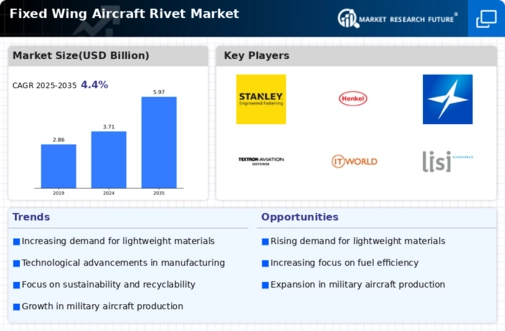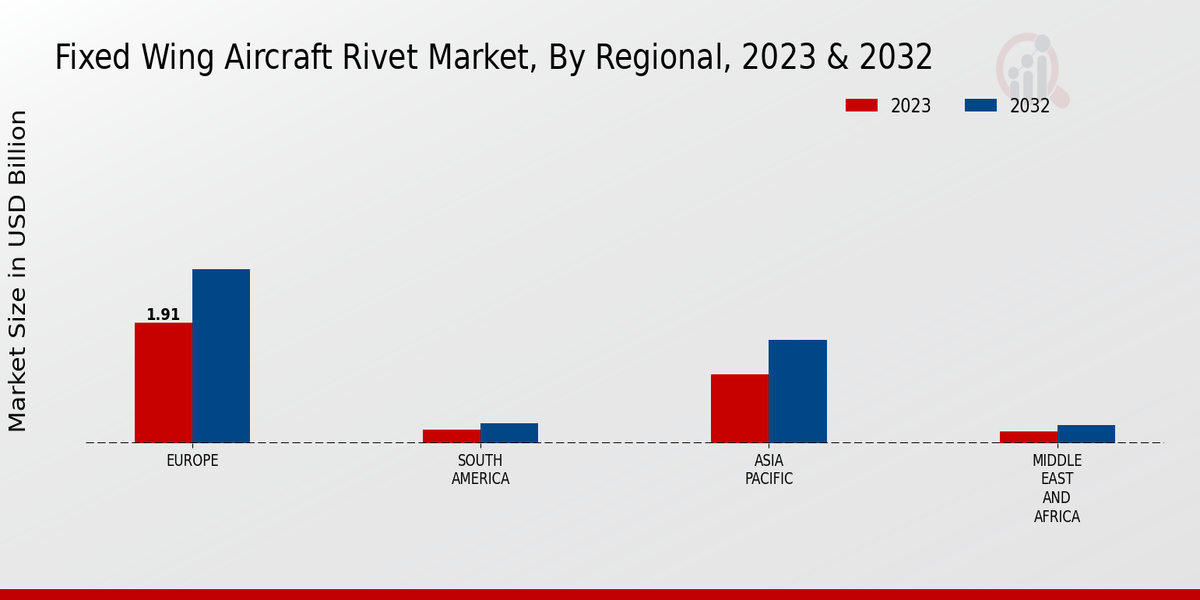Global Military Aviation Expansion
The Global Fixed Wing Aircraft Rivet Market Industry is also benefiting from the expansion of military aviation. Governments worldwide are increasing their defense budgets, leading to the procurement of new aircraft and upgrades to existing fleets. This growth in military aviation creates a heightened demand for reliable rivets that can withstand rigorous operational conditions. As nations invest in advanced fighter jets and transport aircraft, the need for high-performance fastening solutions becomes critical. This trend not only supports the market's growth but also emphasizes the importance of quality and reliability in rivet production, ensuring that military aircraft meet stringent operational requirements.
Sustainability Initiatives in Aviation
Sustainability initiatives within the aviation sector are shaping the Global Fixed Wing Aircraft Rivet Market Industry. As environmental concerns gain prominence, manufacturers are increasingly seeking eco-friendly materials and production methods. The shift towards sustainable aviation fuels and lightweight materials necessitates the use of innovative rivets that align with these initiatives. This trend is expected to drive market growth as companies prioritize sustainability in their operations. By 2035, the market may see substantial changes as manufacturers adapt to these demands, potentially leading to a CAGR of 4.42% from 2025 to 2035. This evolution reflects a broader commitment to reducing the aviation industry's carbon footprint.
Increasing Demand for Commercial Aviation
The Global Fixed Wing Aircraft Rivet Market Industry is experiencing a surge in demand driven by the growth of commercial aviation. As airlines expand their fleets to accommodate rising passenger numbers, the need for reliable and durable rivets becomes paramount. In 2024, the market is projected to reach 3.71 USD Billion, reflecting the industry's response to increased air travel. This growth is further supported by the introduction of new aircraft models that require advanced fastening solutions. The expansion of low-cost carriers and the revival of international travel are likely to contribute to this trend, indicating a robust future for rivet manufacturers.
Regulatory Compliance and Safety Standards
The Global Fixed Wing Aircraft Rivet Market Industry is heavily influenced by stringent regulatory compliance and safety standards. Aviation authorities worldwide impose rigorous requirements for aircraft components, including rivets, to ensure passenger safety and operational reliability. Compliance with these regulations often necessitates the use of high-quality materials and manufacturing processes, which can drive up demand for specialized rivets. As the industry adapts to evolving safety standards, rivet manufacturers are likely to see increased orders, contributing to market growth. This focus on safety not only enhances the reputation of manufacturers but also fosters long-term relationships with aircraft producers.
Technological Advancements in Aircraft Manufacturing
Technological innovations in aircraft manufacturing are significantly influencing the Global Fixed Wing Aircraft Rivet Market Industry. The integration of advanced materials and manufacturing techniques enhances the performance and durability of rivets. For instance, the adoption of composite materials in aircraft design necessitates specialized rivets that can withstand varying stress levels. As manufacturers invest in research and development, the market is expected to grow, with projections indicating a rise to 5.97 USD Billion by 2035. This evolution in technology not only improves aircraft efficiency but also drives demand for high-quality fastening solutions, positioning rivet suppliers favorably in the competitive landscape.

























Leave a Comment